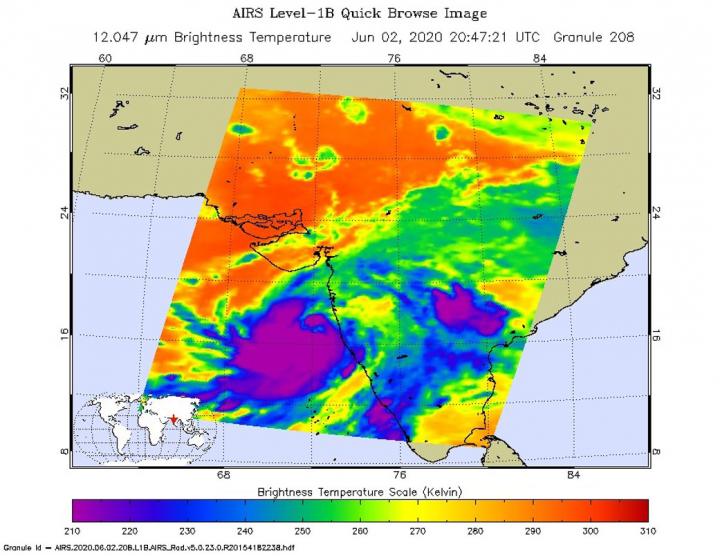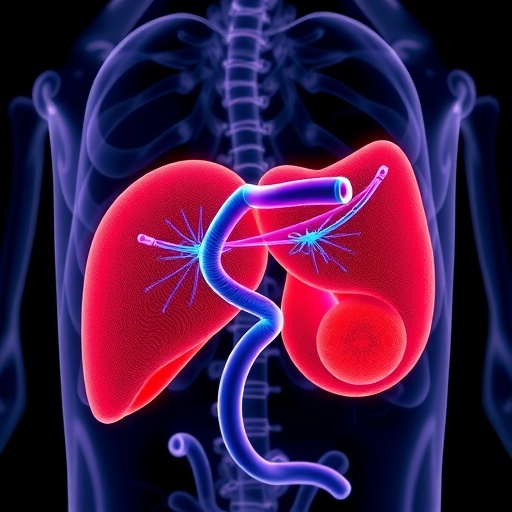
Credit: Credit: NASA JPL/Heidar Thrastarson
Satellite data of Tropical Cyclone Nisarga’s cloud top temperatures revealed that the storm had strengthened before it began making landfall in west central India.
Nisarga formed around 5 p.m. EDT (2100 UTC) on June 2, and had maximum sustained winds near 40 knots (46 mph/74 kph) at that time. Within 12 hours, the storm intensified to hurricane strength.
One of the ways NASA researches tropical cyclones is using infrared data that provides temperature information. Cloud top temperatures provide information to forecasters about where the strongest storms are located within a tropical cyclone (which are made of hundreds of thunderstorms). Tropical cyclones do not always have uniform strength, and some sides are stronger than others. The stronger the storms, the higher they extend into the troposphere, and the colder the cloud temperatures.
On June 2 at 4:47 p.m. EDT (2047 UTC) NASA’s Aqua satellite analyzed the storm using the Atmospheric Infrared Sounder or AIRS instrument. AIRS found cloud top temperatures were getting colder. Colder cloud tops are an indication that the uplift of air in the storm was getting stronger and thunderstorms were building higher into the troposphere. AIRS found temperatures as cold as or colder than minus 63 degrees Fahrenheit (minus 53 degrees Celsius) around the center. NASA research has shown that cloud top temperatures that cold indicate strong storms that have the capability to create heavy rain.
The Joint Typhoon Warning Center noted at 5 a.m. EDT (0900 UTC), Tropical cyclone Nisarga was located near latitude 17.9 degrees north and longitude 72.9 degrees east, about 65 nautical miles (75 miles/120 km) south of Mumbai, India. The storm was moving to the northeast.
Maximum sustained winds were near 75 knots (86 mph/139 kph) making it a Category 1 hurricane on the Saffir-Simpson Hurricane Wind Scale. Those hurricane force winds extended 25 miles (40 km) from the center, while tropical-storm force winds extended 75 miles from the center.
At that time, Nisarga was making landfall south of Mumbai. The system is forecast to track inland and dissipate.
Typhoons and hurricanes are the most powerful weather events on Earth. NASA’s expertise in space and scientific exploration contributes to essential services provided to the American people by other federal agencies, such as hurricane weather forecasting.
The AIRS instrument is one of six instruments flying on board NASA’s Aqua satellite, launched on May 4, 2002.
By Rob Gutro
NASA’s Goddard Space Flight Center
###
Media Contact
Rob Gutro
[email protected]
Original Source
https:/




